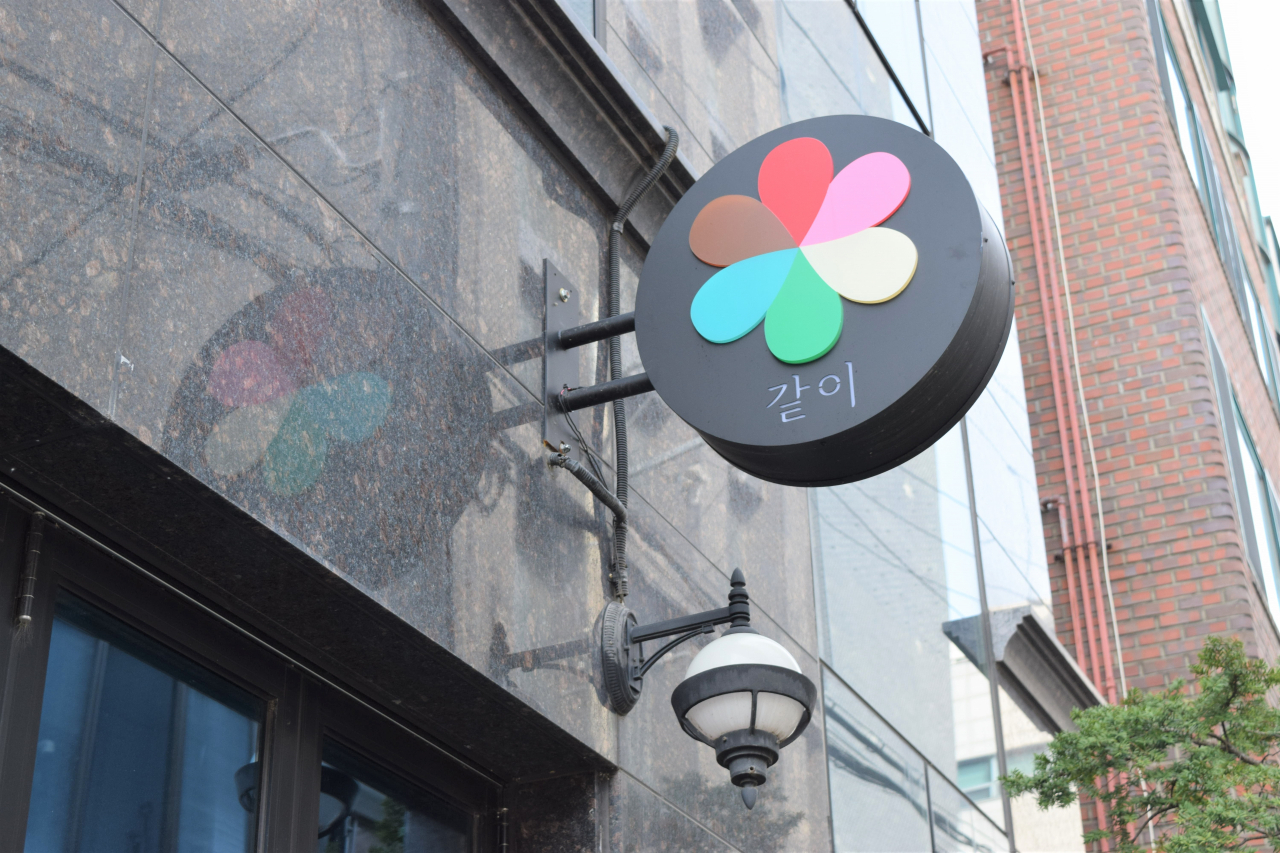
"Makgeolli-bitgi," or makgeolli making and sharing, was designated a National Intangible Cultural Heritage in 2021. Korea's long-held tradition of making makgeolli is found in literary compilations in Goryeo (918-1392), and cookbooks from the Joseon period (1392-1910) contain detailed makgeolli recipes.
The distinctive taste of makgeolli sets it apart from other types of rice wine.
The milky drink has both a sweet and slightly sour flavor, which can be compared to that of yogurt or sourdough bread. At the same time, depending on the ingredients and its making process, makgeolli can also be fruity with a subtle nutty aroma.
But when asking makgeolli lovers what makes it so special among other traditional alcoholic beverages, many praise its unique effervescent texture that gives the drink a light, refreshing mouthfeel.
Makgeolli was made and enjoyed by farmers who used leftover rice to create a low-alcohol beverage that was both refreshing and nutritious to help with digestion and boost immune function.
While it was once considered a drink for the older generation, recently, young Koreans have also begun to appreciate it.
Today, there are many artisanal producers of makgeolli throughout Korea, each offering their own unique take on the traditional beverage.
About a seven-minute walk from Hapjeong Station, away from the hip cafe-filled neighborhoods and toward the residential area, lies Together Brewing Together Dining, a humble makgeolli brewery that opens regular makgeolli making sessions to the public.
Launched some three years ago as an artisanal makgeolli producer in Yeonghui-dong, the place opened its second location in Hapjeong last year, with a purpose to inform the making process of makgeolli to Koreans and tourists in Seoul.
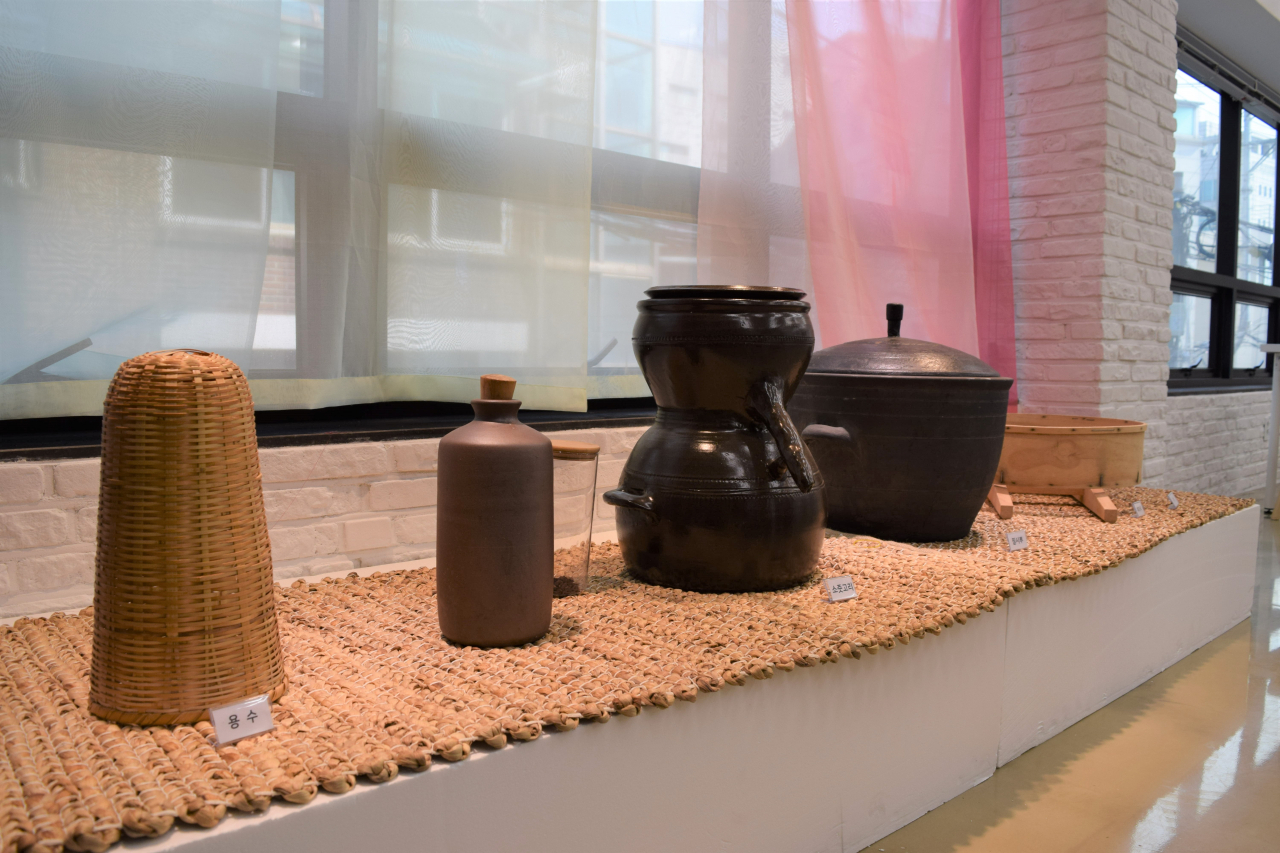
This year, the class opens every Saturday at 3:30 p.m., and lasts a little over an hour.
"Those who are serious about making delicious makgeolli with the full experience, should take regular courses offered in academies, but it's hard for people learning it as a hobby to spare time for weekly lectures," Lee Hee-yun, chief instructor of the makgeolli sessions at Together Brewing Together Dining, told The Korea Herald in an interview on March 10.
Lee himself was a psychology major, and having makgeolli and other traditional drinks was no more than a hobby he had kept up since college.
One day while having makgeolli with friends after work, he became curious of how the drink was made, and this led him to enroll in a series of classes at the Korea Sool Studio, which operates under the Ministry of Agriculture, Food and Rural Affairs.
Shortly after, as Lee began to sweep prizes in traditional liquor making contests, he became deeply interested in studying the relationships of ingredients, and this led him to pursue a master's degree in the field of food microbiology.
"The full experience from making 'godubap' (steamed rice) to mixing it with yeast takes considerable amount of time and patience. It also involves basic science, such as understanding yeast inoculation. But my philosophy above all is that makgeolli making should first and foremost be fun and accessible," Lee said.
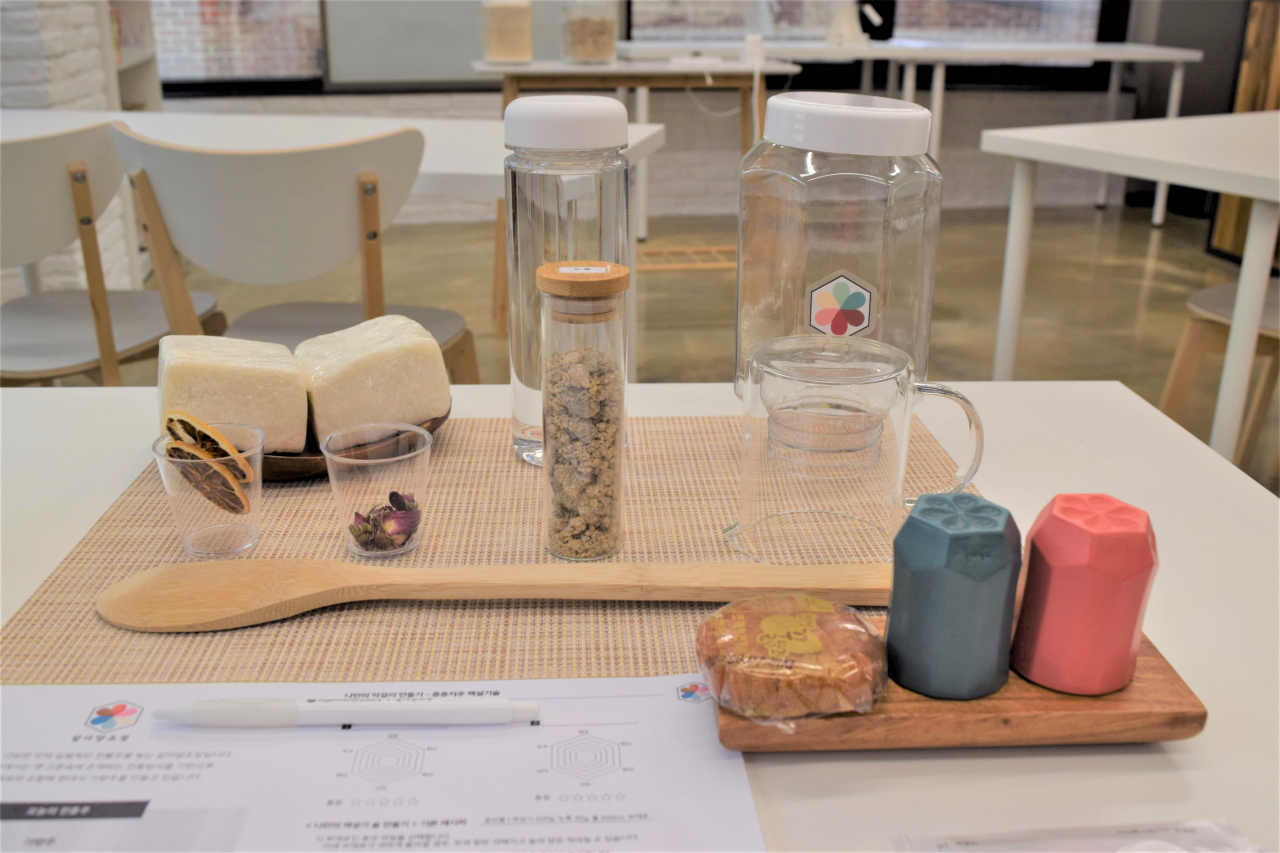
Lee's makgeolli session starts at the makgeolli gallery in the building, where traditional Korean tools used for making and storing various types of liquor are on display. Then, he guides participants to the makgeolli laboratory, which Lee designed himself, and explains the overall process of making makgeolli on a whiteboard.
"Rice is soaked in water for several hours, then steamed and cooled. The cooled rice is mixed with nuruk, a mixture of wheat, barley, and rice that has been inoculated with yeast and other microorganisms," Lee explained. The mixture is then fermented for several days, during which time the nuruk breaks down the starch in the rice into sugar, and the yeast and bacteria convert the sugar into alcohol.
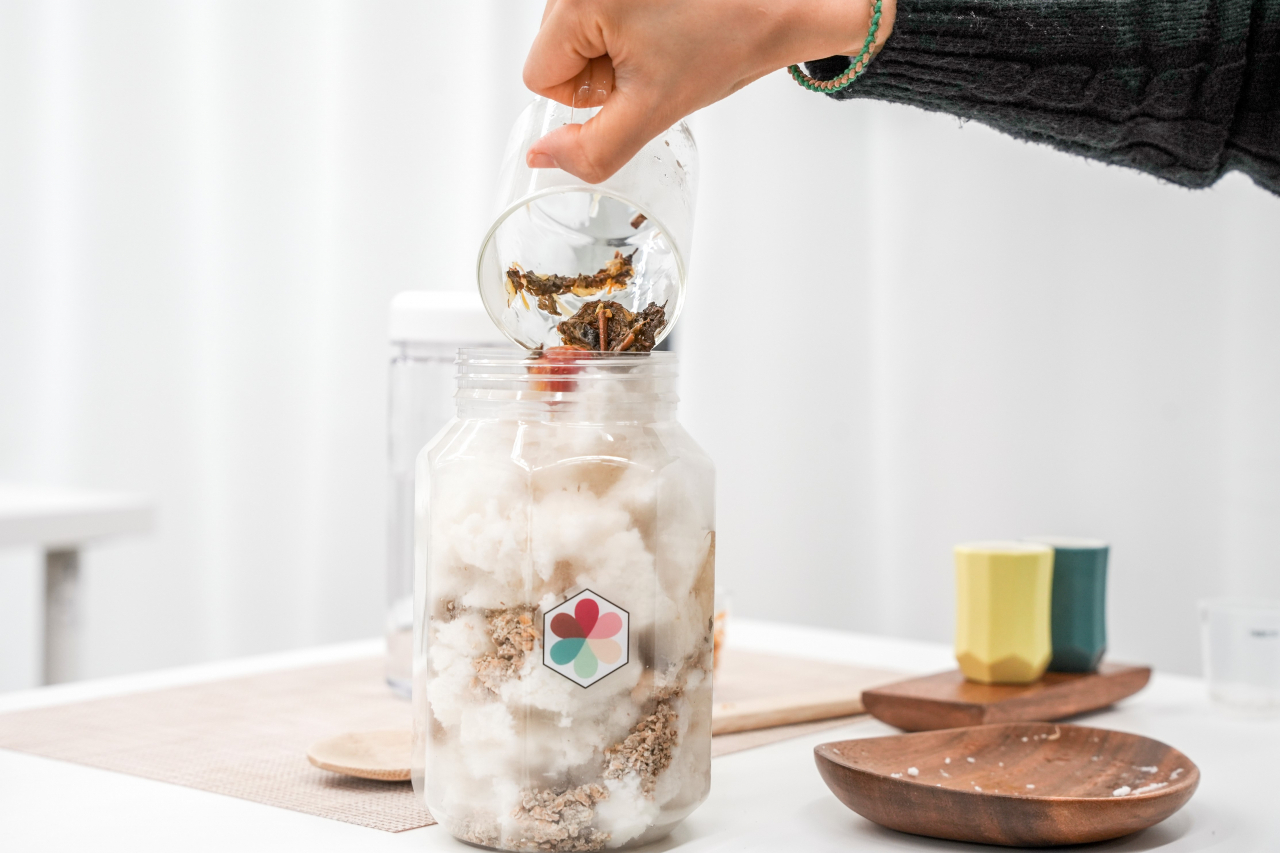
To capture the biologic reaction in detail, Lee demonstrates the actual process of cultivating microorganisms for visitors and magnifies them up to a thousand times through a compound microscope.
The finale happens in the kitchen behind the lab, where participants get to make a jar of makgeolli themselves to bring home.
To save time, "baekseolgi," "nuruk" and water are prepared ahead of time in the kitchen. While tearing sticky rice and nuruk into the jar, the trick is to make layers as dense as possible before pouring water in to mix them.
Depending on each individual’s preference, one can add ingredients like apple mint or dried mandarin slices for some flowery or fruity scent.
It takes about seven days under little to no sunlight, under a consistent temperature between 20-25 degrees Celsius, to make a well-fermented makgeolli, according to Lee.
The jar needs to be stirred once each day. Lee recommends trying a sip with a teaspoon to taste the gradual changes.
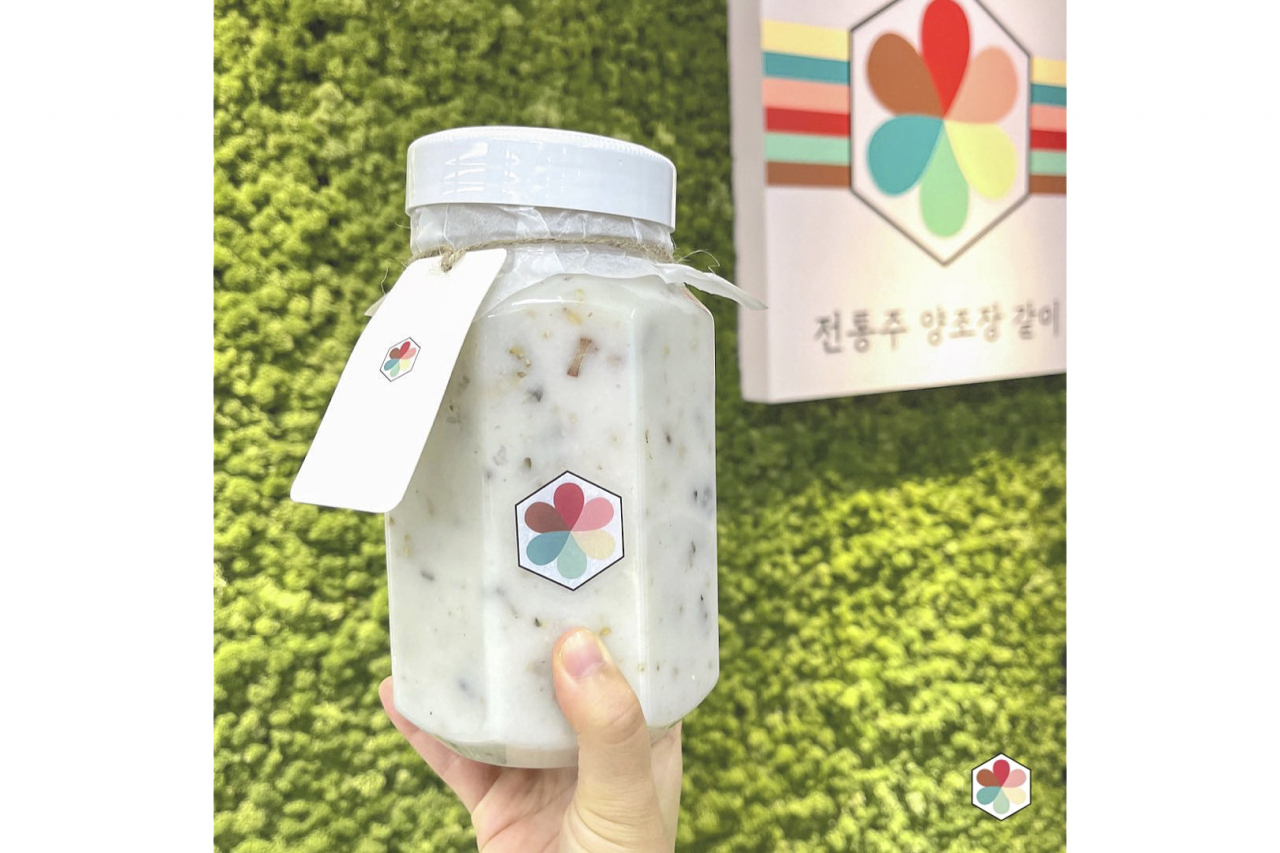
"The resulting beverage will have a cloudy appearance. When you taste it and feel it is just right, that’s when you can start to store them in the fridge and enjoy it within a few days," Lee said.
Throughout the session, Lee encourages participants to ask as many questions to him as possible.
"People have asked me fun questions like, 'Which makgeolli drink that causes the least hangover do you have for sale?' to very sophisticated questions such as how to control the amount of bitterness during the making process," Lee said.
"They are all valuable questions that help us to get to know makgeolli’s nature better and share them with others."



















![[Today’s K-pop] BTS pop-up event to come to Seoul](http://res.heraldm.com/phpwas/restmb_idxmake.php?idx=642&simg=/content/image/2024/04/17/20240417050734_0.jpg&u=)